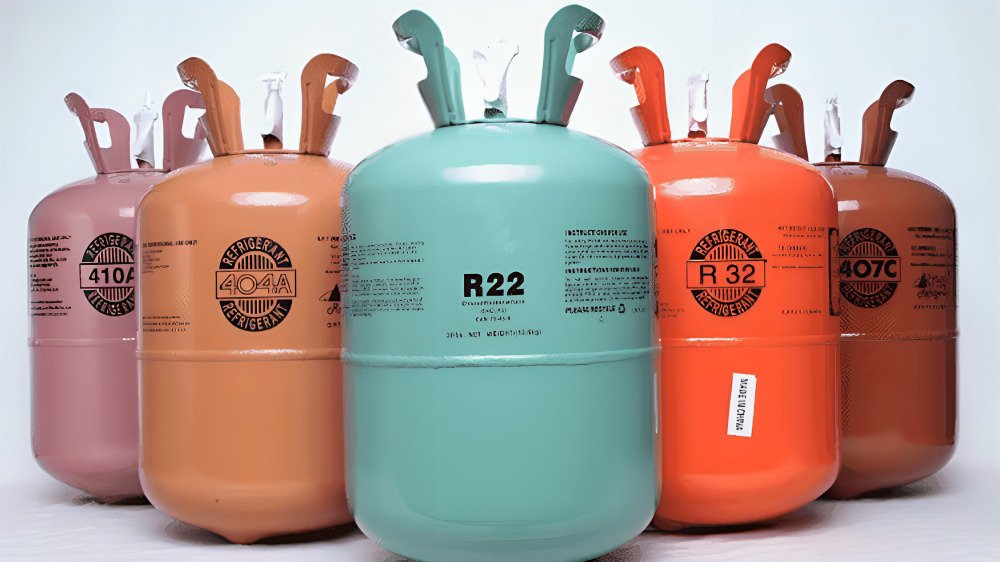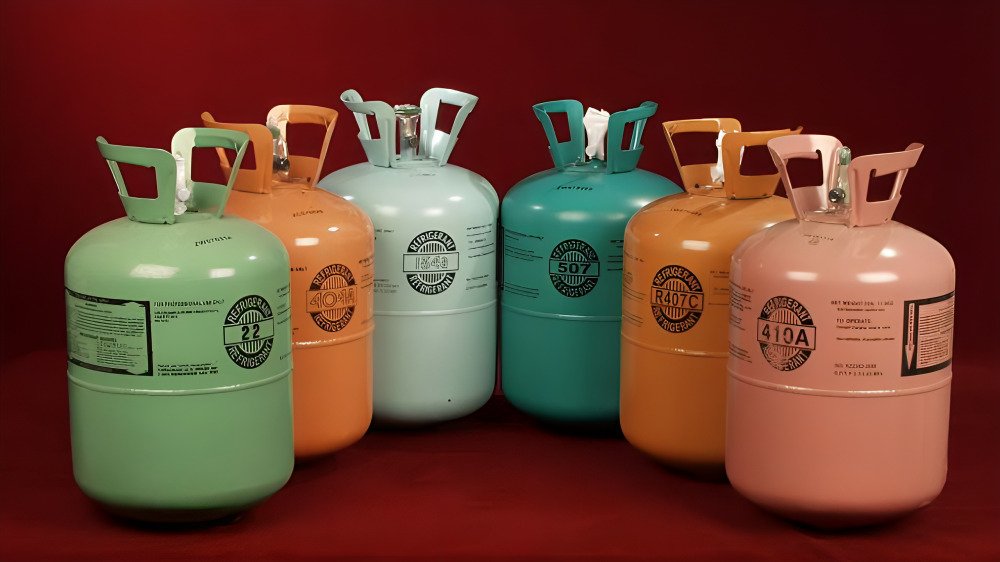Air conditioners are essential in modern living, but the refrigerants inside them are changing quickly. In the past, systems used R22 and later R410A. Now, two new refrigerants, R32 vs R454B, are taking over. These gases are designed to lower environmental damage while still keeping your home cool and comfortable.
This guide will explain everything about R32 vs R454B. You’ll see how they compare in safety, cost, efficiency, and long-term use.
Why Are Refrigerants Changing Again?
Over the years, the HVAC industry has faced several refrigerant transitions. R22 was phased out because it harmed the ozone layer. Then R410A became the standard, but it still carried a high Global Warming Potential (GWP) of 2088.
To meet global climate rules, the industry is now moving toward lower GWP refrigerants. That’s where R32 vs R454B come in. Both have zero Ozone Depletion Potential (ODP) and much lower GWP values, making them more eco-friendly. This change isn’t just about rules-it’s also about preparing for future energy standards and safety requirements.
What Do GWP, ODP, and A2L Really Mean?
When comparing refrigerants, three terms matter most: GWP, ODP, and A2L classification. Let’s break them down.
1. Global Warming Potential (GWP)
This shows how much heat a gas traps compared to carbon dioxide. R32 has a GWP of 675, while R454B has an even lower GWP of 466. The smaller the number, the better for the environment.
2. Ozone Depletion Potential (ODP)
This measures how much a gas damages the ozone layer. The good news is both R32 and R454B have zero ODP, making them ozone-friendly.
3. A2L Safety Rating
This label means the gas has low toxicity and mild flammability. Both refrigerants fall under this category. HVAC makers add safety systems like leak detectors and auto-shutoff features to ensure safe use.
How Does R32 Work as a Refrigerant?
R32, also called difluoromethane, is a single-component refrigerant. This means it is not a blend of gases, which makes it easier for technicians to handle. Systems using R32 often need less refrigerant, which helps lower costs.

Its GWP of 675 makes it more eco-friendly than R410A, which had a GWP of 2088. R32 has been used successfully in Japan and other countries for more than a decade. Even though it is mildly flammable, built-in safety features reduce risks.
Key highlights of R32:
- Lower cost than R454B
- Easy handling since it is not a blend
- Higher pressure performance for strong cooling
How Does R454B Work as a Refrigerant?
R454B, also known as Opteon XL41 or Puron Advance, is a blend of R32 and R1234yf. This mix gives it a GWP of 466, which is lower than R32 and makes it one of the greenest options today. Since it’s a blend, recharging requires more care. However, it falls into the same A2L safety category. Manufacturers believe R454B is future-proof because rules are likely to get even stricter.
Key highlights of R454B:
- Lowest GWP among common refrigerants
- Safer blend with flame-retardant properties
- Backed by major manufacturers for long-term use
Are R32 and R454B More Expensive Than R410A?
Yes, both cost more today. The shift to new refrigerants has increased prices because production and supply chains are still growing.
Here’s a comparison table for clarity:
| Refrigerant | GWP Value | Cost Compared to R410A | Notes |
| R410A | 2088 | Baseline (0%) | Being phased out |
| R32 | 675 | +48% | Requires less charge |
| R454B | 466 | +150% | Blend, future-proof |
For homeowners, the difference isn’t dramatic. Most of the cost comes from labor, not refrigerant. For example, adding two pounds of R454B may cost about $50 more than the same charge of R410A. Prices may stabilize as supply increases in the coming years.
How Safe Are A2L Refrigerants Like R32 and R454B?
A2L refrigerants such as R32 and R454B are considered very safe when installed and maintained by trained professionals. Their “mildly flammable” tag means they are hard to ignite and do not pose an explosive risk under normal conditions. Any leak is usually very small and unlikely to build up to dangerous levels. Modern AC units also include safety features like leak detectors and auto shutdown systems, ensuring safe operation in homes and offices.
Can Old Air Conditioners Use R32 or R454B?
No, old air conditioners cannot run on R32 or R454B because they were designed for older refrigerants like R22 or R410A. The new refrigerants operate under different pressures and chemical properties, making retrofitting impossible.
Homeowners can continue using their existing systems with R22 or R410A as long as they work. When it’s time to replace the unit, the new system will automatically be built for R32 or R454B, depending on the manufacturer.
R32 vs R454B: Efficiency, Pressure, and Performance
Both refrigerants perform well, but with differences in design.
- R32 systems run at higher pressure, which can boost cooling output but requires stronger components.
- R454B runs at slightly lower pressure, giving stability and reduced environmental harm.
On pressure-temperature (PT) charts, R32 shows higher discharge pressure than R454B. This difference is why manufacturers design units differently for each refrigerant.
Conclusion
The comparison of R32 vs R454B shows that both are strong replacements for R410A, but they serve slightly different needs. R32 offers easier handling, lower cost, and strong cooling performance, making it a practical choice for many systems. On the other hand, R454B delivers the lowest GWP and future-proof compliance, though it is more expensive and complex to manage. Homeowners don’t need to rush into a switch, but when replacing an old unit, the decision will depend on whether they value performance and cost or future regulations and sustainability. Both options represent a clear step forward toward safer and greener cooling solutions.
FAQs
Q1. What’s the key difference between R32 and R454B refrigerant?
Ans. R32 is a single refrigerant with GWP 675. R454B is a blend with GWP 466. R32 is easier for technicians, while R454B is greener and future-ready.
Q2. Is R32 flammability better than R454B?
Ans. Both are classified as A2L. However, R454B includes R1234yf, which lowers flame risk slightly compared to pure R32.
Q3. Why is R32 refrigerant banned in some places?
Ans. Certain regions restrict mildly flammable refrigerants in residential use. Local building codes and safety laws decide where it’s allowed.
Q4. What are the disadvantages of R454B?
Ans. It is more expensive than R32, and as a blend, it requires careful handling. This makes servicing slightly more complex.
Q5. Will CO₂ replace these refrigerants?
Ans. CO₂ (R744) is used in some commercial systems because its GWP is just 1. It may grow in use, but technical challenges limit it in home cooling for now.
